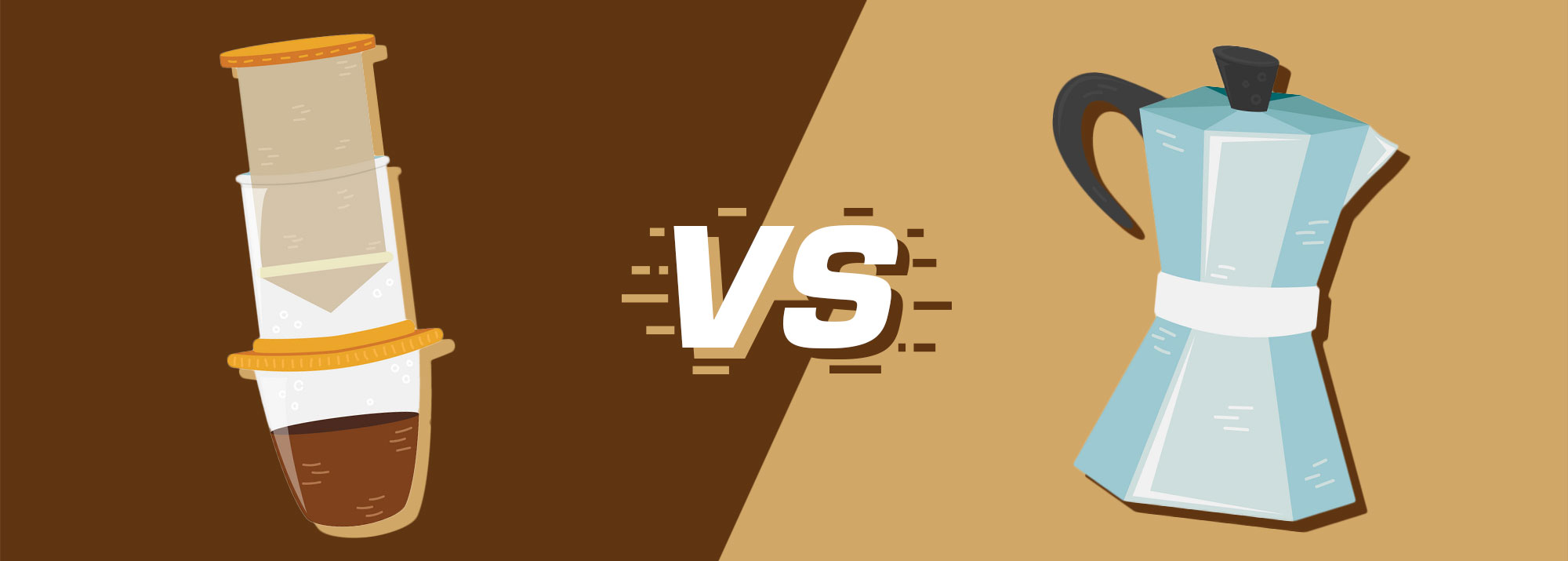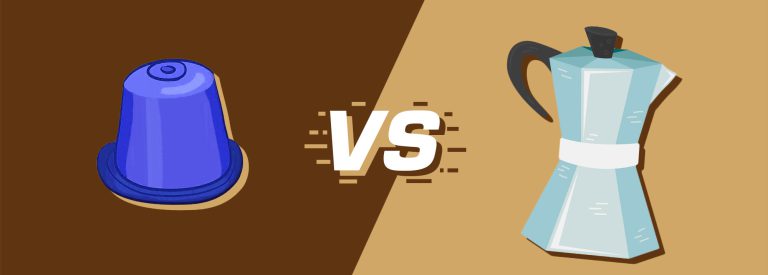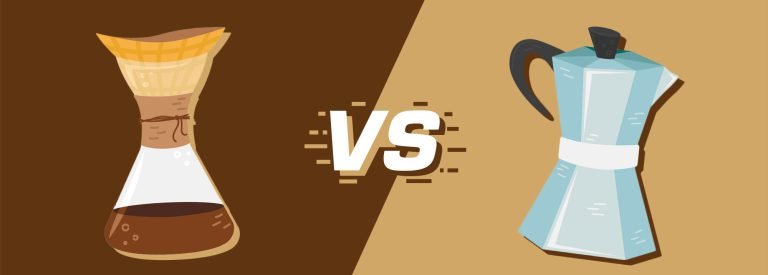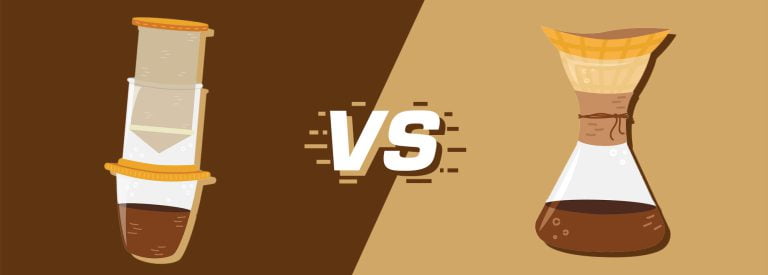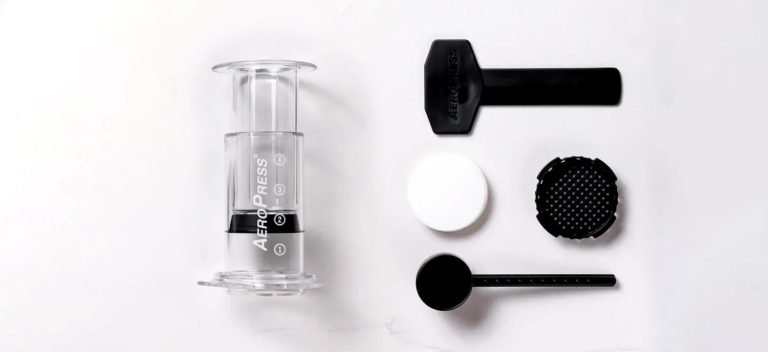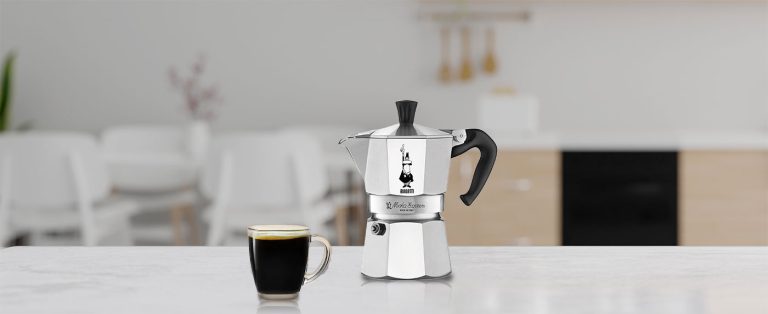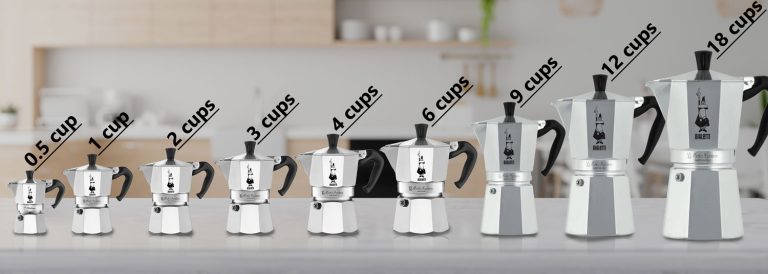AeroPress vs Moka Pot: Which Brewing Method is For You?
As a coffee lover, I always start my day with a freshly brewed cup. But one day, as I was debating between my AeroPress and Moka Pot, I couldn’t help but wonder – which is better?
It’s no secret that both methods are popular among caffeine enthusiasts worldwide. So, in this article, let’s dive into the nitty-gritty details of these brewing techniques and compare them head-to-head to settle the score once and for all.
Comparing AeroPress & Moka Pot – Which Method is Better?
So, which is better, the AeroPress or Moka Pot? It depends on what you’re looking for in your coffee.
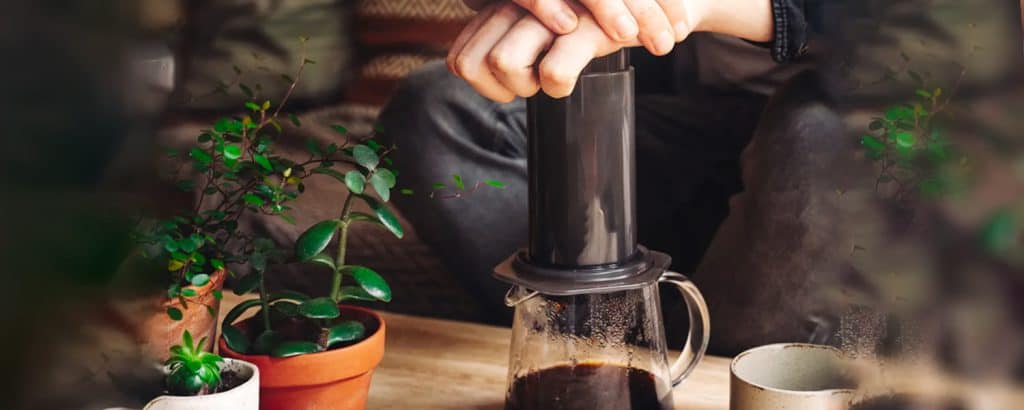
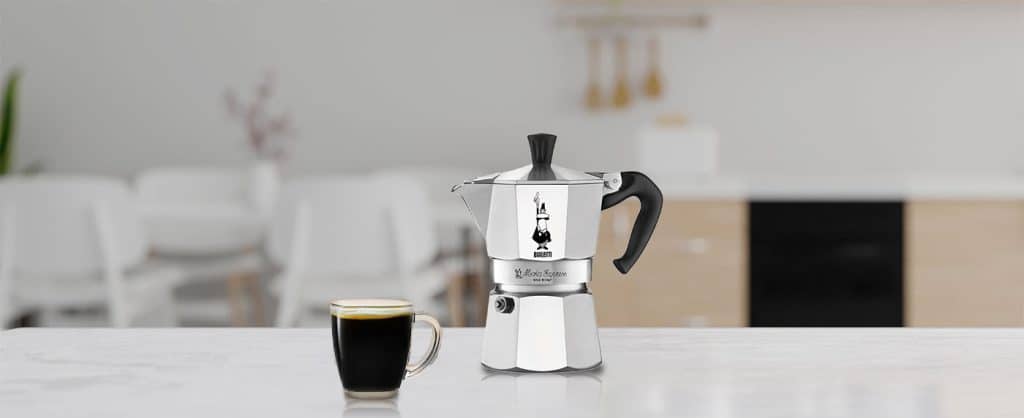
Brewing coffee with an AeroPress is a unique, yet straightforward process. You add ground coffee and hot water into the chamber and let it steep for a short period before pressing down on a piston that forces the brewed coffee through a paper filter into your cup. This results in a clean and smooth cup of coffee with minimal bitterness.
On the other hand, the Moka pot is a stovetop classic that makes strong and bold coffee similar to espresso. It involves filling the bottom chamber with water, placing ground coffee in the middle basket, and heating it over low heat until the steam pressure builds up enough to the brewing water through the ground coffee and into the top chamber. The result is an intense flavor that resembles espresso.
Here is a table comparing the features of the AeroPress and Moka Pot:
| Features | AeroPress | Moka Pots |
|---|---|---|
| Taste & Flavor | Rich, full-bodied, low acidity, versatile | Concentrated, robust, espresso-like, strong |
| Strength | Light to bold, wide range of options | Strong, leans towards robust flavors |
| Ease of Use | Simple brewing process, minimal mess | Straightforward, no filter needed |
| Brewing Speed | Around 3-4 minutes | Around 10 minutes |
| Versatility | High degree of customization, control | Limited adjustments, more flexible in capacity |
| Durability & Portability | Highly durable plastic, lightweight, compact | Durable metal construction, various sizes |
| Sustainability | Uses recyclable or reusable filters | Virtually zero waste, long-lasting |
| Cost | Around $30-$40 | Approximately $15-$70 |
Detailed Comparison Between the AeroPress & Moka Pot
Here’s a closer look at the factors that set AeroPress and Moka Pot apart from each other.
Taste, Flavor, & Strength
When it comes to coffee taste and flavor, there is no doubt that both the AeroPress and Moka Pots produce rich and full-bodied cups of coffee. The AeroPress, with its low acidity, offers a smoother cup of coffee. Plus, you can get creative with various recipes to achieve different taste profiles from an espresso-style shot to a longer, more diluted cup.
On the other hand, the Moka Pot produces a concentrated and robust espresso-like coffee that is typically quite strong. It’s perfect for those who prefer their coffee bold and powerful. However, if you’re not a fan of strong coffee, you may find the brew too overpowering.
The AeroPress can produce light and delicate or bold and strong cups while the Moka Pot leans towards stronger flavors due to its brewing process. The better-tasting cup between the two is really up to you. The Aeropress can create coffee with different taste profiles and with low acidity while the Moka Pot produces strong espresso-like cups with less variety in flavors.
Ease of Use
Both AeroPress and Moka Pots are pretty easy to use. Making coffee using an AeroPress is a breeze with minimal mess. You just need to measure out the grinds, set a timer, add coffee and hot water, and then press down on the plunger when the extraction is completed according to your chosen recipe. It’s that easy.
Additionally, you can choose from paper, metal, or cloth filters depending on your preference. As a rule of thumb, grind the coffee beans into a medium-fine size and maintain the temperature between 175°F-205°F (79°C-96°C) for optimal results. Then start tweaking from there to get your perfect cup.
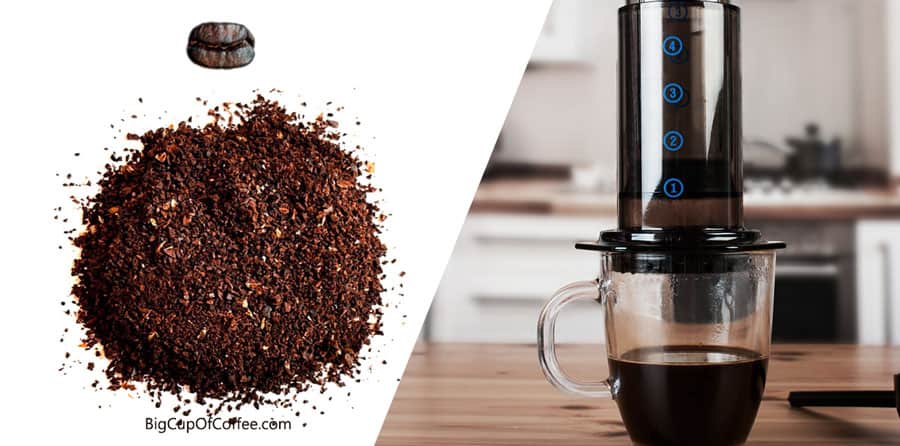
Using Moka Pots is also fairly simple and straightforward. With no filter needed thanks to its built-in metal filter basket, this method is quite convenient. All you need is the right grind size – medium-fine – and keep in mind that the required water temperature should be around 212°F (100°C). This makes it perfect for outdoor camping trips as well; all you will require is heat nearby.
If we compare these two methods based solely on ease of use, the Moka Pot edges over slightly due to its simpler brewing process compared to Aeropress’ more nuanced approach.
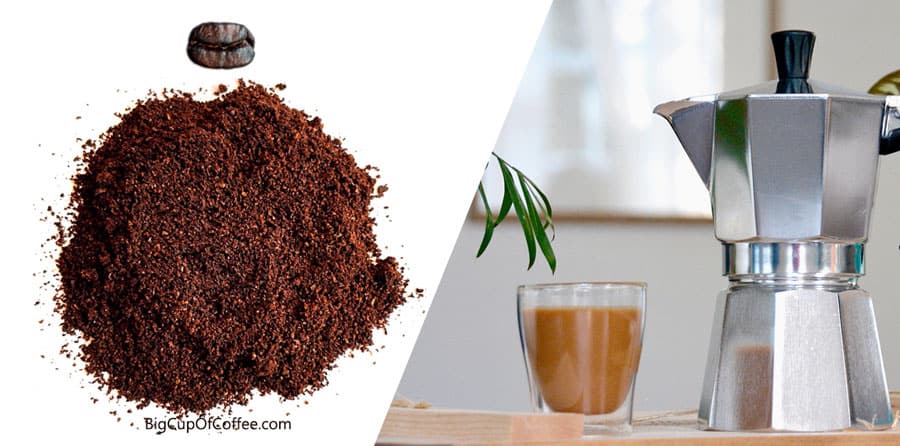
Brewing Speed
In terms of brewing speed, the AeroPress takes the lead over the Moka Pots. The AeroPress has a total brewing time of around 3-4 minutes from preparation to clean up. This includes grinding, brewing, and cleaning. In contrast, Moka Pots have a total brewing time of around 10 minutes. This is because Moka Pots require more time for water to boil and then brew.
Cleaning-wise, the AeroPress is easy and quick to clean. It only requires a simple rinse of the plunger and chamber, and you’re done. Click here to read my in-depth guide to cleaning the AeroPress.
Meanwhile, Moka Pots can be a bit tricky to fully clean. Coffee oils and grinds can get stuck in the small crevices of the filter basket and filter. This can make cleaning slightly more time-consuming.
Overall, AeroPress coffee is faster to make than Moka Pot coffee due to its shorter brewing time and easier cleaning process. So if you’re someone who’s always on the go and looking for a quick and hassle-free way to brew your coffee, the AeroPress might just be the perfect option for you.
Versatility
Versatility is important for coffee brewers because it allows us to customize our coffee to our own unique taste preferences. In this regard, the AeroPress outshines the Moka Pot.
The AeroPress offers unparalleled control over almost every aspect of the brewing process, including water temperature, amount of coffee, grind size, brewing time, and pressure. This level of customization means that you can experiment with different recipes to find the perfect cup of coffee that suits you.
With the Moka Pot, you can only adjust the coffee-to-water ratio and grind size to some extent, rather than having complete control over every facet. This means that experimentation is quite limited.
When it comes to capacity though, the Moka Pot has the advantage over the AeroPress. The standard AeroPress can only brew up to 10 oz (290 ml) of coffee, while the AeroPress Go can make 8oz (230 ml) in one go.
On the other hand, the Moka Pot comes in a wide range of sizes:
- 0.5-cup (40 ml)
- 1-cup (60 ml)
- 2-cup (90 ml)
- 3-cup (130 ml)
- 4-cup (190 ml)
- 6-cup (340 ml)
- 9-cup (540 ml)
- 12-cup (670 ml)
- 18-cup (810 ml)
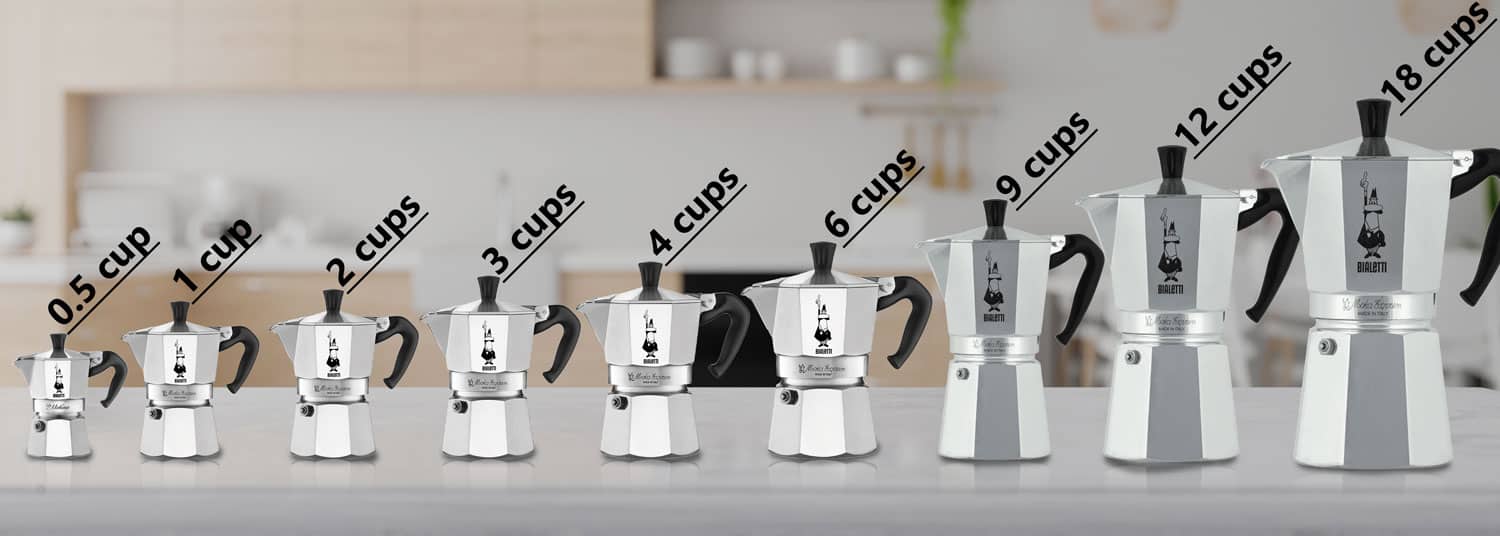
So it’s really up to you on which one you prioritize: the control you have over the brewing process or the amount of coffee you can make in one go.
The Moka Pot may be more flexible in terms of capacity, but the AeroPress allows you better control of the different brewing aspects.
Durability and Portability
Both the Moka Pot and AeroPress offer great durability and portability in their own ways.
The AeroPress is highly durable thanks to its plastic construction, making it ideal for travel. As someone who enjoys camping trips or going on weekend getaways, I am always looking for portable coffee makers that can withstand the wear and tear of outdoor activities. The lightweight and compact design also makes the AeroPress easy to pack in my backpack without taking up too much space. However, the Moka Pot can be heated over a campfire, while you need an extra pot to do this with an Aeropress.
Moka pots are made of either aluminum or stainless steel, which makes them generally durable as well. They also come in different sizes, so you can choose one that fits your needs whether you’re traveling alone or with a group. However, they are not as lightweight as the AeroPress, due to their metal construction.
Personally, I prefer the more portable option – the AeroPress – because it suits my lifestyle better. There was a time when I went on a road trip across several states with friends and we wanted fresh coffee every morning. Luckily, I brought along my trusty AeroPress and it did not disappoint.
Sustainability
Sustainability in coffee is important because it helps to reduce the impact that our daily cup of joe has on the environment. When comparing AeroPress and Moka Pots, we can consider various factors to determine which one is better for sustainability.
The AeroPress, while made with a plastic body and silicone seal, uses recyclable and compostable paper filters that help to minimize waste. However, a more eco-friendly option would be to use reusable metal or cloth filters instead. This reduces the need for single-use paper filters and minimizes waste further.
On the other hand, moka pots are incredibly sustainable due to their minimal waste production. Because they only require water and coffee grounds, there’s no need for disposable pods or filters. Additionally, being made entirely of metal means they last a long time without replacement cycles – classic aluminum Bialetti moka pots can last decades with just occasional rubber gasket replacements.
While both options have their pros and cons when it comes to sustainability, the clear winner is the moka pot. By producing virtually zero waste and lasting a lifetime with proper care, it’s an excellent choice for the environmentally-conscious coffee lover.
For more eco-friendly ways to make coffee, read my article about shade-grown coffee and ways to recycle your used coffee grounds.
Cost
If you want to invest in a new brewing gadget, the cost is an essential factor.
- The AeroPress costs around $30 to $40
- Prices for Moka Pots range from approximately $15 to $70
However, when it comes to value for money over time, the Moka Pot has the edge as they are reusable with no need to replace parts regularly. In contrast, using the AeroPress means consistently purchasing paper filters that can add up in expenses.
That being said, the replacement paper filters for AeroPress only cost about $0.02 each in 2025, making them still quite affordable in terms of ongoing costs.
So if you’re looking for a more affordable option upfront or want something compact and easy to use, then go for the AeroPress. But If you’re willing to spend a bit more initially and prefer not to worry about additional ongoing costs down the road, then the Moka Pot may be more suitable for your needs.
AeroPress & Moka Pot – Weighing the Pros & Cons
Now that we’ve gotten a closer look at the features of each brewing method, here’s a quick overview of the pros and cons of AeroPress and Moka Pot so you can finally decide which one is for you:
| Brewing Method | Pros | Cons |
|---|---|---|
| AeroPress | – Highly portable – Versatile – Produces smooth and consistent coffee – Low acidity – Fast and easy to use and clean | – Limited capacity – The plastic body is not eco-friendly |
| Moka Pot | – Small and portable – Easy to use – Produces robust coffee similar to espresso | – Cleaning is a bit tougher – Limited control once the brewing has started – Can easily have a bitter taste |
You can also read about how AeroPress compares to other brewing methods such as:
You can also check out how Moka Pot (French press)
Conclusion
So, which is better? After comparing the AeroPress and Moka Pots, it’s clear that both offer unique benefits for coffee lovers. The AeroPress is highly portable, versatile, and produces smooth and consistent coffee with low acidity. On the other hand, the Moka Pot is more sustainable and produces robust coffee similar to espresso.
Personally, I prefer the AeroPress because of its ease of use and cleanup, as well as its ability to produce a variety of coffee styles including ultra-fast Aeropress cold brew. Plus, its sleek design makes it a great addition to any kitchen or travel setup.
But ultimately, the choice between these two brewing options comes down to your personal preference. So why not try them both and see which one you like best? And don’t forget to share your thoughts in the comments below.

